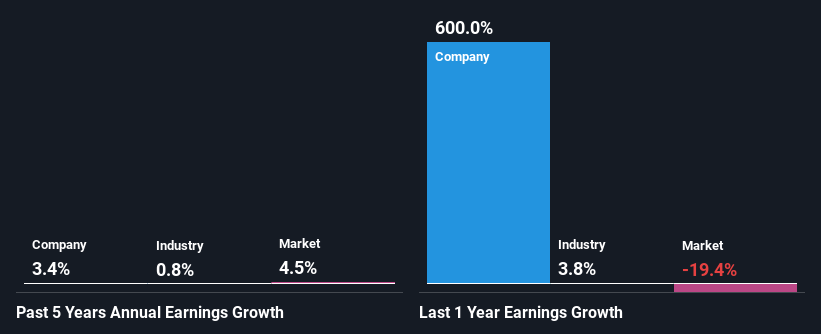Contact Energy Limited's (NZSE:CEN) Has Had A Decent Run On The Stock market: Are Fundamentals In The Driver's Seat?
Contact Energy's (NZSE:CEN) stock is up by 8.8% over the past three months. As most would know, long-term fundamentals have a strong correlation with market price movements, so we decided to look at the company's key financial indicators today to determine if they have any role to play in the recent price movement. In this article, we decided to focus on Contact Energy's ROE.
Return on equity or ROE is a key measure used to assess how efficiently a company's management is utilizing the company's capital. In simpler terms, it measures the profitability of a company in relation to shareholder's equity.
View our latest analysis for Contact Energy
How Do You Calculate Return On Equity?
The formula for ROE is:
Return on Equity = Net Profit (from continuing operations) ÷ Shareholders' Equity
So, based on the above formula, the ROE for Contact Energy is:
11% = NZ$287m ÷ NZ$2.7b (Based on the trailing twelve months to December 2023).
The 'return' is the income the business earned over the last year. So, this means that for every NZ$1 of its shareholder's investments, the company generates a profit of NZ$0.11.
What Is The Relationship Between ROE And Earnings Growth?
We have already established that ROE serves as an efficient profit-generating gauge for a company's future earnings. Based on how much of its profits the company chooses to reinvest or "retain", we are then able to evaluate a company's future ability to generate profits. Assuming everything else remains unchanged, the higher the ROE and profit retention, the higher the growth rate of a company compared to companies that don't necessarily bear these characteristics.
Contact Energy's Earnings Growth And 11% ROE
At first glance, Contact Energy seems to have a decent ROE. On comparing with the average industry ROE of 8.7% the company's ROE looks pretty remarkable. Despite this, Contact Energy's five year net income growth was quite low averaging at only 3.4%. That's a bit unexpected from a company which has such a high rate of return. Such a scenario is likely to take place when a company pays out a huge portion of its earnings as dividends, or is faced with competitive pressures.
Next, on comparing with the industry net income growth, we found that Contact Energy's growth is quite high when compared to the industry average growth of 0.8% in the same period, which is great to see.
Earnings growth is an important metric to consider when valuing a stock. It’s important for an investor to know whether the market has priced in the company's expected earnings growth (or decline). This then helps them determine if the stock is placed for a bright or bleak future. If you're wondering about Contact Energy's's valuation, check out this gauge of its price-to-earnings ratio, as compared to its industry.
Is Contact Energy Using Its Retained Earnings Effectively?
Contact Energy's very high three-year median payout ratio of 150% suggests that the company is paying its shareholders more than what it is earning and it definitely contributes to the low earnings growth seen by the company. This is indicative of risk. You can see the 2 risks we have identified for Contact Energy by visiting our risks dashboard for free on our platform here.
In addition, Contact Energy has been paying dividends over a period of at least ten years suggesting that keeping up dividend payments is way more important to the management even if it comes at the cost of business growth. Our latest analyst data shows that the future payout ratio of the company is expected to drop to 119% over the next three years. However, the company's ROE is not expected to change by much despite the lower expected payout ratio.
Summary
In total, it does look like Contact Energy has some positive aspects to its business. Namely, its high earnings growth, which was likely due to its high ROE. However, investors could have benefitted even more from the high ROE, had the company been reinvesting more of its earnings. As discussed earlier, the company is retaining hardly any of its profits. That being so, a study of the latest analyst forecasts show that the company is expected to see a slowdown in its future earnings growth. To know more about the company's future earnings growth forecasts take a look at this free report on analyst forecasts for the company to find out more.
Have feedback on this article? Concerned about the content? Get in touch with us directly. Alternatively, email editorial-team (at) simplywallst.com.
This article by Simply Wall St is general in nature. We provide commentary based on historical data and analyst forecasts only using an unbiased methodology and our articles are not intended to be financial advice. It does not constitute a recommendation to buy or sell any stock, and does not take account of your objectives, or your financial situation. We aim to bring you long-term focused analysis driven by fundamental data. Note that our analysis may not factor in the latest price-sensitive company announcements or qualitative material. Simply Wall St has no position in any stocks mentioned.

 Yahoo Finance
Yahoo Finance 
